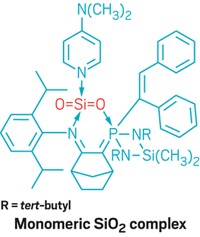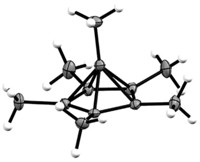Advertisement
Grab your lab coat. Let's get started
Welcome!
Welcome!
Create an account below to get 6 C&EN articles per month, receive newsletters and more - all free.
It seems this is your first time logging in online. Please enter the following information to continue.
As an ACS member you automatically get access to this site. All we need is few more details to create your reading experience.
Not you? Sign in with a different account.
Not you? Sign in with a different account.
ERROR 1
ERROR 1
ERROR 2
ERROR 2
ERROR 2
ERROR 2
ERROR 2
Password and Confirm password must match.
If you have an ACS member number, please enter it here so we can link this account to your membership. (optional)
ERROR 2
ACS values your privacy. By submitting your information, you are gaining access to C&EN and subscribing to our weekly newsletter. We use the information you provide to make your reading experience better, and we will never sell your data to third party members.
Materials
Crystal-Free Crystallography Method Clarifies Structure Of Iodine Reagent
After failing to live up to its original promises, method proves useful for determining atom connectivity
by Carmen Drahl
March 3, 2014
| A version of this story appeared in
Volume 92, Issue 9
When chemists in Japan last year reported a crystal-free X-ray diffraction method for determining structures of molecules by inserting them in metal-organic framework (MOF) hosts, researchers rejoiced. The work didn’t live up to all its promises, however—the team realized that the method could not unambiguously determine the stereochemistry of a marine sponge metabolite, as they previously claimed. An independent group at MIT has now shown that the method still works for determining atom connectivity (Angew. Chem. Int. Ed. 2014, DOI: 10.1002/anie.201310897). Ekaterina V. Vinogradova, Peter Müller, and Stephen L. Buchwald determined the structure of another group’s iodine reagent, used for transferring trifluoromethyl-sulfur groups to carbon atoms. The structure shows that the SCF3 group is bound to the oxygen atom of the reagent, not the iodine atom as previously reported. The revised structure suggests that the reagent may be working through an unexpected mechanism. The hardest part of the crystal-free method was getting the reagent inside the MOF scaffold, says Müller, who directs MIT’s X-ray facility. Vinogradova spent considerable time preparing the MOF and soaking it in the pure compound, which is a liquid. The method isn’t for every molecule, Müller says, and to do it right, “you need to be patient.”





Join the conversation
Contact the reporter
Submit a Letter to the Editor for publication
Engage with us on Twitter